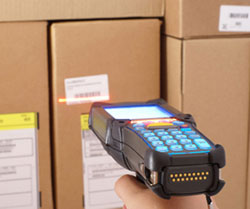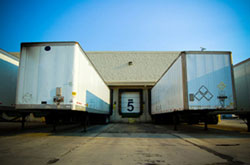
Determining the best software system for managing warehouse functions can be a confusing proposition, given the number of available options and merchants’ varying needs.
Most options provide the essentials required to operate a basic warehouse. Many order management systems (OMS) have warehouse or back-end functionality as part of their overall software package. Enterprise resource planning systems (ERPs) also tend to offer some form of warehouse control.
Still, many merchants choose a warehouse management system (WMS) for their operations, as a supplement to their other software. That’s because WMSs include broader-based warehousing and fulfillment functionality that can be hard to find in the other systems.
WMS functions are targeted to a specific set of processes, whereas the other options must enable control of many other complex functions, in addition to the warehouse. The specialization of the WMS enables configurability, scalability and flexibility.
So should you consider a WMS for your operation vs. an OMS or another back-end system? Probably — if your warehouse needs to handle complex functions and requirements.
But to help you sort out the answer to that question, let’s take a look at how a WMS tends to differentiate itself from other options when it comes to addressing specific warehouse requirements and issues. This overview of the software functions will also help you choose a WMS.
PROCESS OPTIONS
Today, most warehouses are being asked to perform a variety of tasks requiring a wide range of functionality.
These include: handling multiple business channels (including direct-to-customer, ecommerce, retail and wholesale), as well as a range of manufacturing and assembly requirements. What’s more, many third-party fulfillment companies have variable requirements based on their individual clients’ business models and specifications.
To manage these complex business needs, a control system must be able to provide different processes based on the warehouse and warehouse zone, the function, the client, the order profile and other factors.
What separates most WMS software from other options is the ability to break down the total workload in the warehouse and apply appropriate business rules and processes to various segments.
INVENTORY MANAGEMENT
Since inventory is usually the largest warehouse asset and cost item, effective inventory control ranks near the top of operational priorities. The typical WMS offers advantages over many other systems in this area.
Most systems can increment inventory based on receiving, and decrement after shipping. But a WMS lets you select the timing of changes to various inventory status categories, which provides a more timely and accurate picture of inventory.
Moreover, the ideal is using barcode scanning to make real-time inventory transactions reflect current inventory status throughout the warehouse — and the advanced barcode capabilities available through WMS options can facilitate this objective.
Most systems will support basic physical or cycle counting capabilities, but you’ll likely need a WMS if you want to employ a variety of triggers to dictate cycle counts. For example, the capability to conduct cycle counts based on specific products or by aisle or zone or to have counts reflect “zero” slot conditions or errors in processing (putaway, replenishment and packing) generally is found only in WMS solutions.
LABOR MANAGEMENT
Metrics for quantifying units of work performed, by individual per employee hour — whether measured in terms of items, orders, lines, cartons, pallets or some other criterion — are the key to effective labor management. This includes being able to track labor hours for receiving, quality control, putaway, replenishment, picking, packing, shipping, returns, cycle counts and special projects.
Such measurement and tracking is essential for determining labor needs based on expected workloads, both for standard, day-to-day operations and special projects. Production and assembly operations naturally require meticulous planning to ensure that their costs do not exceed budget.
WMS options also provide broader, more flexible capabilities than other systems within the labor management area. Most can not only identify and track which employee is performing a function, the amount of work completed and the time it takes to do the job, but also offer a variety of ways to track and report performance.
Further, unlike most other system options, WMSs support the ability to use task interleaving to minimize wasted movements or travel within a facility, make optimum use of each employee’s time, and maximize overall productivity.
MULTIPLE ENTITIES
Many companies have multiple warehouses differentiated by geography or function. In both cases, WMSs enable you to manage multiple facilities with different rules and still maintain overall control of inventory management and order processing.
Many other software types offer some multifacility management capabilities, but the way in which they perform this sometimes results in restrictions rather than advantages.
This aspect is not just about operating multiple facilities, however. A WMS also makes it possible for merchants to manage different catalog titles or brands in different ways.
RECEIVING
Many warehouses have implemented a strict vendor compliance program, along with a vendor “scorecard” to track key metrics and attributes. Many systems can’t track these metrics, but a WMS typically can.
Usually, WMS functionality also supports use of advance shipping notice (ASN) systems that can aid scheduling and streamline receiving processes.
In many cases, receiving is responsible for collecting or verifying the specific-item information to be used in the item master file for other warehouse functions. Some warehouses implement restrictions to ensure that key data are on the file before the receiving process can continue. This forced file maintenance is sometimes difficult to achieve with non-WMS systems.
PICKING OPTIONS
Most warehouses work best with a variety of picking methods available to accommodate differences in product sales velocity, order profiles, product cube and weight, inventory control and other factors.
Some options available in many WMS packages enable these picking methods: single-order pick; cart/bin pick; batch pick and sort; zone pick; wave pick; pick and pass; cross-dock; and dynamic “hot pick.” Most WMS packages have interfaced or integrated successfully with newer options, such as pick-to-light and voice-picking options.
The ability to preview the queue of orders in the system and determine the order in which they will be processed is another capability merchants often want. Most systems push orders to the warehouse, but the WMS model provides the option of the warehouse directing the pull-down of orders as needed.
PRODUCTION/ASSEMBLY
In warehouses where production/assembly functions are performed, it’s critical to be able to plan and track work through the production process, both for quality and cost control purposes. Inventory management is also key.

Most WMS products have the ability to manage inventory and tasks as products are assembled. Many track raw materials inventory and provide a finished goods control system, as well as tracking labor usage and work-order status.
While many systems can support simple kitting function assembly, more complex processes are beyond their scope. WMSs, on the other hand, can support multilevel, bill-of-materials processing requirements and functionalities such as “kit on the fly” and kitting for inventory.
ADD-ON FUNCTIONALITY
With many warehouse systems, adding additional functionality requires a work-intensive (and possibly risky) interface process with other software packages.
With WMSs, unexpected changes in an operation can usually be addressed with system configuration changes, rather than requiring development of software modifications. Many WMS products already include the interfaces needed to add on other functionality modules as desired.
Some of the types of modules available in WMS packages include: transportation control; slotting programs; yard management; planning and forecasting; third-party logistics/inventory and billing management; material handling interfaces; and multicarrier rate shopping.
BARCODE SCANNING
Fully leveraging barcode technology to track labor and inventory is one of the best ways to improve accuracy and productivity and control costs.
Again, most warehouse software includes some level of barcode scanning capability, but the more advanced capabilities in a WMS provide an added level of control that can spell the difference between an average operation and an exceptionally efficient one. One example: Scanning barcodes on packaging materials as they are being used not only enables better inventory tracking, but the ability to track packaging cost by customer. That, in turn, enables creating accurate, realistic pricing or billing models.
Curt Barry ([email protected]) is president of F. Curtis Barry & Co., a multichannel operations and fulfillment consultancy.
